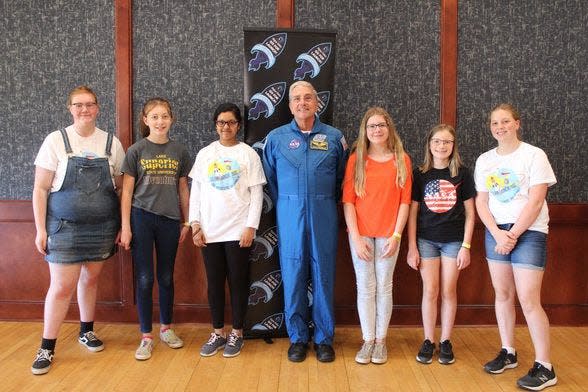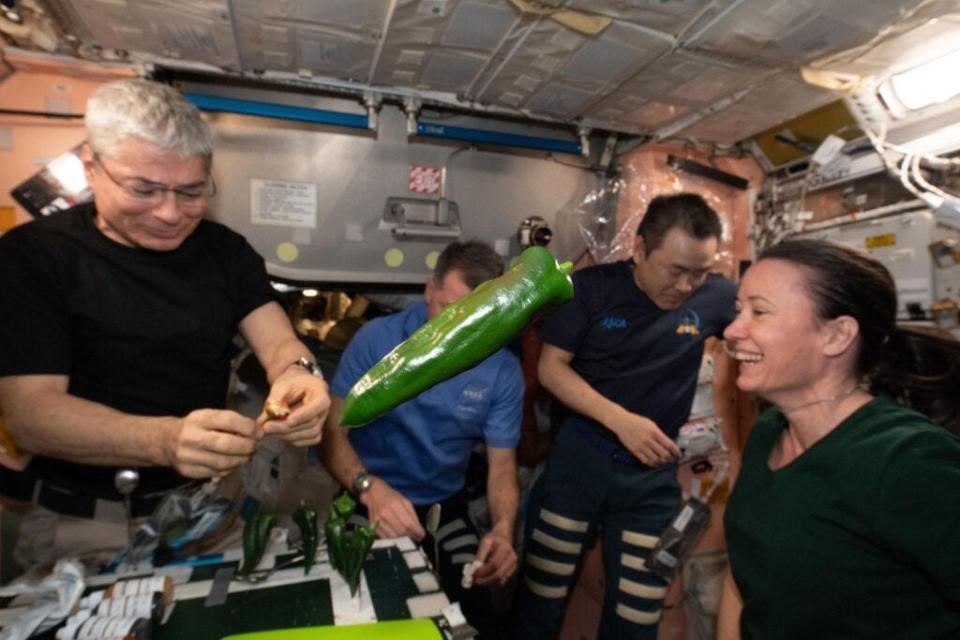Sault students send project idea to space

SAULT STE. MARIE — Six students from Sault Area High School and Middle School will have a chance to contribute to the advancement of space travel with their group project.
Students Cierra Aikens, Zahraa Mahmud, Taylor Meilstrup, Evelyn Weber, Siri Olson and Claire Parks formed the team "Space Shell 6" and together they designed an experiment to help in the advancement of space travel. Later this year their experiment will be placed on a rocket and conducted by astronauts in space.
In the summer of 2022, several Sault area students participated in a local summer camp designed to get kids interested in space science. Go For Launch is a nationwide organization that helps students across the country become interested in space-related fields. One of the main programs Go For Launch offers is to give students a chance to design a space experiment.
Students break off into groups and come up with an idea for an experiment that can be conducted inside a ship in orbit, the teams then created a version of the project that can be conducted regularly, to show how it would be conducted in space.
Only one team in each region can be chosen for the project, so teams competed against a panel of judges, who would choose the best project to be tested. A panel of 20 scientists, astronauts and engineers were shown projects from students from the Eastern Upper Peninsula, Alpena and Adrian before choosing the project from Space Shell 6 in Sault Ste. Marie to fly to space.
For their project, Space Shell 6 created an experiment to test the growth of yeast in orbit. The experiment involves placing both plant seeds and yeast seeds into a space environment, with limited oxygen and sunlight.
Many experiments in the past have shown that growing plants from seeds in space is possible in the right conditions, and can even create oxygen while inside a ship in orbit. Study into the way plants grow in space is extensive, because it is important to any plans of colonizing space to understand how plant cells grow in these conditions.

Subscribe:Get unlimited access to our coverage
While there is a lot of data about plant cells growing in these conditions, there is very little data about how animal cells can grow in these conditions. To test this theory, the experiment will use yeast, which, despite growing similar to a plant, is made up of the kind of cells found in animals, and see how well it grows in space.
"The cells in plants aren't the same as in animals, it's nice to see if a plant can survive but the whole point is to see if something like an animal can grow," said Siri Olson, one of the students participating in Space Shell 6.
Several containers of different amounts of yeast will be placed in containers with seeds, which will grow and produce oxygen. With the oxygen from the seeds and sunlight from the 45-minute day-night cycles of a space ship, the yeast should theoretically have everything it needs to grow.
When the ship returns to Earth, scientists will measure the growth in each cup, and compare it to how much it would have grown in regular atmospheric conditions. This kind of experiment can help scientists understand how to raise living creatures in terraformed environments.
"Our whole team loves animals, we knew we wouldn't want to send an actual animal into space, but we still need to see if living things could survive up there off cellular respiration," said Olson.
The Space Shell 6 students were all excited to have the project they designed flown to space, and for many of them, it sparked an interest in STEM fields in the future.
"We were all so excited when we won, you would have needed ear plugs because we were all screaming with excitement," said Olson. "I think we're all much more interested in going into STEM programs now, that's something we can all pursue once we get out of high school."
While official launch details have not yet been confirmed, the shuttle carrying the project is planned to launch in late 2023.
— Contact Brendan Wiesner: BWiesner@Sooeveningnews.com
This article originally appeared on The Sault News: Sault students send project idea to space

